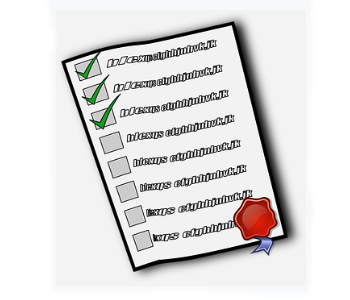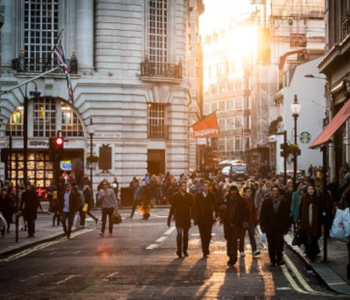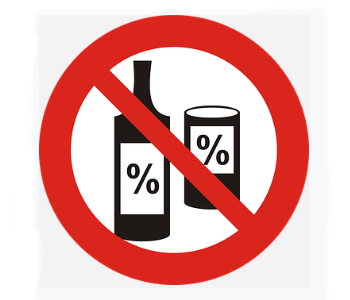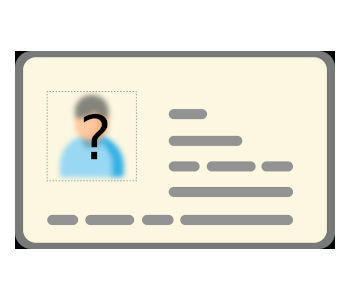10 Basic Flight Rules for New Drone Pilots Explained
With the holiday season coming up, we can expect another rush of people getting their very first drones. With new drones will come new drone pilots, some of whom may not realize that national airspace ain’t like the Wild West – we have rules around here. For those are thinking of buying a drone for the holidays for themselves or as a gift for their children, check out our list below of the very basic flight rules you need to remember.
1. Register your drone

The first thing you need to do when you get your drone is to check its weight. If your drone weighs anywhere between 0.55 and 55 pounds, and it likely will, then you’ll need to register it with the FAA.
According to the 2017 FAA Reauthorization Act, all drones that fall within this weight range need to be registered with the FAA, regardless of whether the drone is used recreationally or commercially.
Thankfully, registering your drone can be done completely online. All you need to do is to log in to the FAA’ s DroneZone portal, sign up for an account with your name and email address, provide a billing address, and pay the $5 registration fee. Oh, and you’ll also need to be at least 13 years of age.
You should receive a unique registration number once you’ve completed this whole process. You’ll be glad to know that you won’t have to repeat the registration process when you get a second or third drone – the first registration number you got can apply to all the succeeding drones that you get.
A new rule introduced by the FAA several months ago requires owners to mark their drones with their registration numbers in a manner that can be easily seen from the outside. There is no prescribed way to do this – you can mark your drone with a sticker, with permanent ink, or even etch the number on the drone’s body. As long as the mark is visible, you should not run into any issues.
2. Fly below 400 feet
One of the golden rules of drone flight is to never fly above 400 feet. Take note that the 400-feet limit is measured from the elevation of the ground where the drone took off. Thus, you can take your drone on a hike, launch it from the mountaintop, and happily fly the drone within the 400-feet boundary – even when you are already more than a thousand feet above sea level.
This 400-foot limit was established because the minimum cruising altitude of manned aircraft is at 500 feet. Should you happen to have a manned aircraft flying right above your drone, then you should still have an at least 100-foot safety buffer. Avoiding any interaction between drones and manned aircraft is one of the most important objectives of drone flight rules, mostly because “close encounters” related to this type of incident are also incredibly common.
There’s an exception to this rule, though. If you’re flying within 400 feet of a tall structure, such as a building or a communications tower, then you’re allowed to fly up to 400 feet above the highest point of the structure. The justification for this exception is the fact that manned aircraft also adjust their cruising altitude when flying above such obstacles.
3. Never fly over people

Despite their small size, a drone still has several sharp edges and fast-moving parts that can cause heavy injury if they crash into a person. For this reason, drone pilots are prohibited from flying over people, and especially over huge crowds such as concerts or sports events.
From a more legal perspective, drone flight is prohibited over anyone who is not “directly participating over the operations of the aircraft.” Thus, flying a drone over a member of your crew is fine but flying it over spectators isn’t – even when they have given their consent.
The FAA even takes the definition of “flying over a human being” up another level. According to the FAA, a drone pilot needs to consider the trajectory that a drone will take should it crash and ensure that such trajectory will not result in personal harm. This will compel drone pilots to keep a respectable distance away from crowds and non-participating people.
4. Don’t fly your drone when under the influence

In many ways, flying a drone is like driving a car. You need a clear head to do it and be free of any conditions that could compromise your ability to see potential hazards and react to them quickly and properly. And just like driving a car, getting into an accident with your drone could result in heavy property damage of personal injury.
Taking this comparison further, the FAA also prohibits the operation of a drone if you are under the influence of alcohol and drugs that could compromise your physical and mental ability to pilot the drone.
In the case of alcohol, flying a drone with a blood alcohol content higher than 0.08% is prohibited. More often, it is up to the drone operator to conduct a self-assessment of their fitness to fly a drone, even after the prescribed time has passed after the last alcohol consumption.
5. Never fly beyond visual line-of-sight
You can only fly your drone as far as you can still see it without the use of visual aids such as binoculars. This is the principle behind visual line-of-sight (VLOS) rules. How far you can push VLOS depends on several factors – how big your drone is, if there are weather conditions that reduce visibility, or if you are flying with a visual observer. In most cases, though, this distance can be less than a mile, with two miles really pushing it.
Using FPV technology isn’t a valid way to bypass this rule. The reason behind this rule is that FPV technology only provides you a very limited perspective of the surroundings of your drone. If there are potential hazards at the blind spot of your camera, then they could very easily cause your drone to crash.
Having a visual observer is accepted practice so that you’ll have someone else to always establish visual contact with the drone. However, it’s not possible to form a “daisy chain” of visual observers to extend the limits of VLOS, as the drone operator still needs to maintain visual contact with the drone. In any case, communication is key when a drone operator works with a visual observer.
6. Always give right of way to manned aircraft
It may sound demeaning, but drones are so far below the hierarchy of the elements of national airspace that they are always expected to yield right of way. This applies to all types of manned aircraft – commercial flights, military planes, hang gliders, even hot air balloons! Drones are also expected to fly away and down from a manned aircraft, and never above it or in front of it.
7. Be wary of airspace requirements

Just because your drone is so small and maneuverable doesn’t give you permission to just fly it anywhere. The FAA, the ultimate authority when it comes to the NAS, has designated certain areas as controlled airspace or restricted airspace.
Controlled airspace usually refers to the areas in the immediate vicinity of airports where an unusually high amount of air traffic is expected. The extent of controlled airspace can vary according to the size of the airport, but the point is that drone pilots generally cannot fly in controlled airspace without prior authorization.
Back in the day, this has to be done by calling up the air traffic control tower of the airport and asking for permission. Things are a lot better nowadays with the LAANC, a system that allows you to request for airspace authorization via a mobile app and to receive an almost-instant response. The system was primarily designed for licensed drone pilots in mind but has recently been updated to support recreational drone pilots, as well.
Restricted airspace is a bit harder to define because there can be a lot of different reasons for why an area can be declared ‘restricted.’ There may be ongoing military exercises in the area, an event that draws large crowds, or a disaster event that requires emergency response personnel to move in. There are also restricted areas where you are outright prohibited to fly your drone, while some others merely discourage the act.
This is one of the more complex aspects of drone flight and aviation in general. If you are still new to drones, we suggest reading up on airspace classifications and sectional charts.
8. You need a license to fly your drone commercially

You’ve probably seen or heard of drones being used to capture some nice aerial photography or for some high-risk inspection of buildings or towers. While it’s true that the skill of being able to fly drones well has a huge earning potential, you can’t just decide to do it without going through a certification process.
The FAA has authority over the certification of commercial drone pilots through the Part 107 rules, which were enacted just three years ago. According to Part 107, a drone pilot needs to secure a Remote Pilot Certificate before they can legally fly their drones for profit.
With so many drones flying around nowadays, the FAA has started to treat drone pilots as “airmen.” The certification process reflects this paradigm, with drone pilots being required to pass a knowledge test that covers several aviation-related topics. The goal for the certification is to establish a baseline level of knowledge and proficiency for commercial drone pilots, ultimately resulting in safer national airspace.
9. Check with local laws before flying over someone else’s property
Flying your drone over someone else’s backyard without their permission can quickly turn into a hairy situation. Incidences of drones getting shot down by irate neighbors are fairly common, and you wouldn’t want to have a hand in increasing this statistic.
This is a controversial matter because, technically, property owners do not own any of the airspace above their land. This is because all of the national airspace is under the authority of the FAA, even the airspace a foot above your backyard. Thus, these cases have been resolved in wildly different ways – some have sided with the property owner, while some have cited that shooting down the drone constitutes property damage.
To avoid getting into trouble, there are two things that you must do: check with local laws and ask for permission from your neighbors. Since the FAA does not enforce any restrictions on drone flight over private property, some states have instead passed their own laws regarding the matter. For instance, Florida considers the use of drones to violate a person’s reasonable expectation of privacy, especially within their property, to be a criminal offense.
10. Stay away from national parks

Flying your drone and capturing aerial photos of national parks sounds like a great idea, but we’ll have to be the ones to break the bad news: you can’t do that. A blanket restriction under 35 CFR 1.5 prohibits drone flight over all areas under the authority of the National Park Service (NPS). The reason for this restriction is the hazard that drones pose on visitors and wildlife alike, as well as the noise that drones make that can disrupt the serenity of these parks.
Even better, the NPS also has authority over some wilderness areas, historic sites, biking and walking trails, rivers, battlefields, and monuments. The NPS is apparently quite serious about enforcing this law, as there has been at least one tourist that has been fined a $5000 penalty due to flying a drone over the Grand Prismatic Spring back in 2014.
While there are few ways that you can go around this restriction, such as if you are flying your drone for a scientific study, it’s still one of the strictest limitations to drone flight. If you really need to capture that drone shot, then you might want to consider flying just outside the boundary of a National Park and taking your shot from that angle.
Final thoughts
We realize that this list reads like a list of things to NOT do when you get your brand-new drone, but we hope that it doesn’t turn you away from drone flight. Even with all the controlled airspace and restricted airspace, there are still plenty of areas where you can fly your drone without needing to ask for authorization. We believe that there’s enough airspace for everyone, but we must all follow proper drone flight rules to keep the hobby safe for everyone – drone pilots and spectators, alike.

